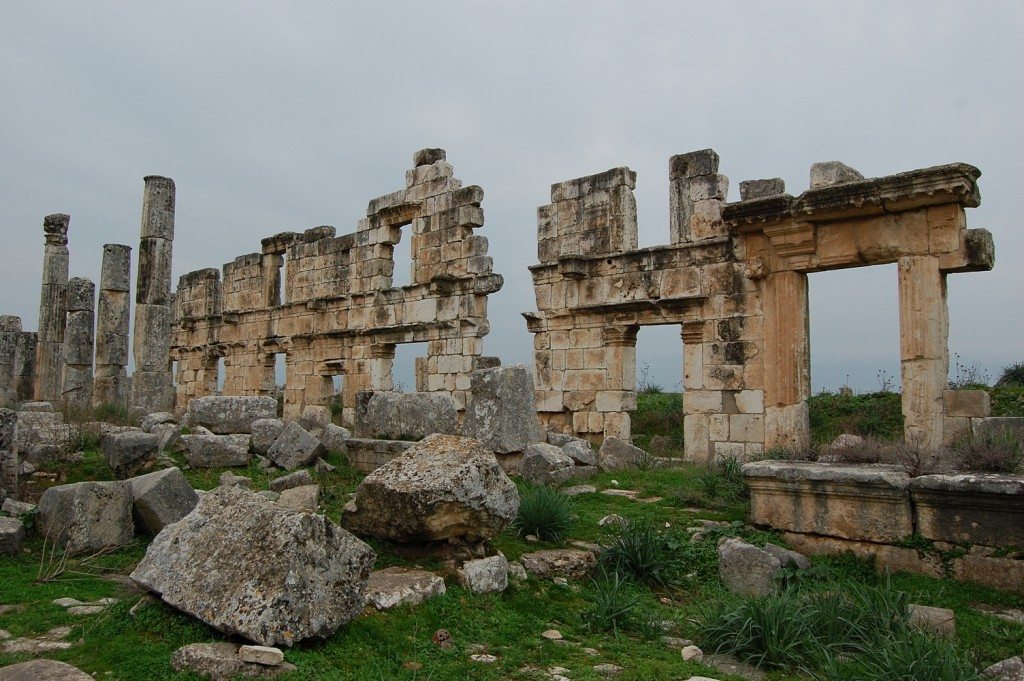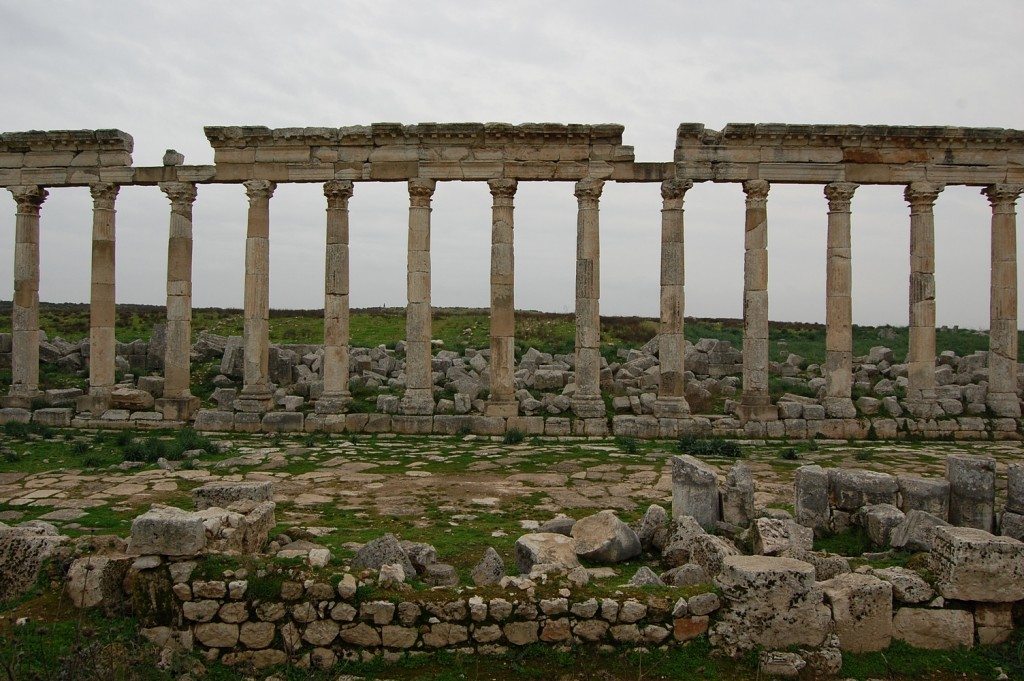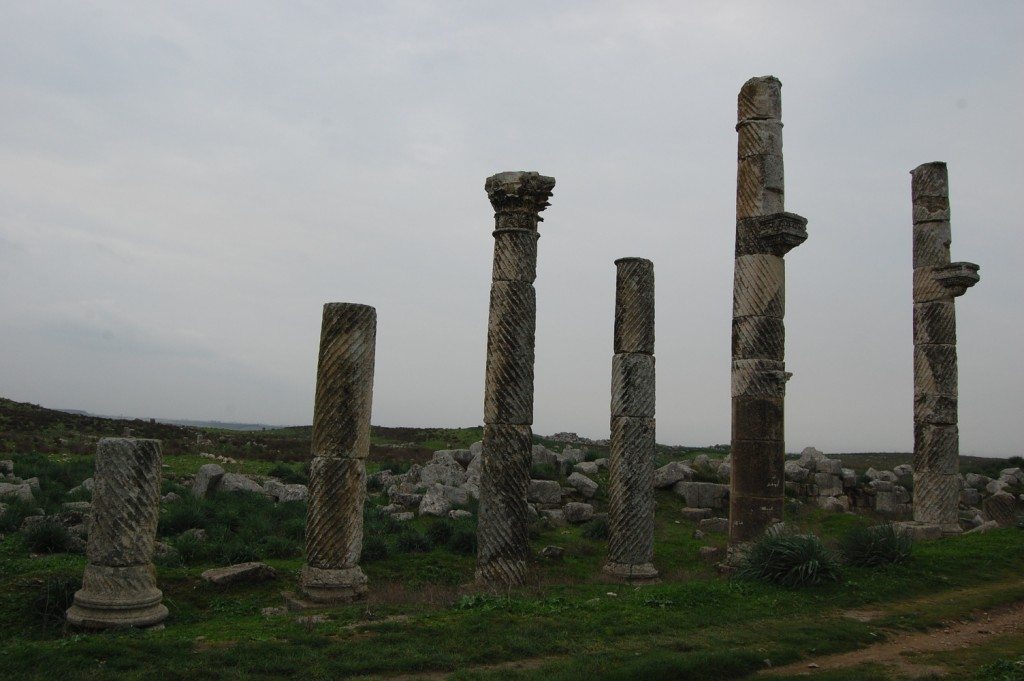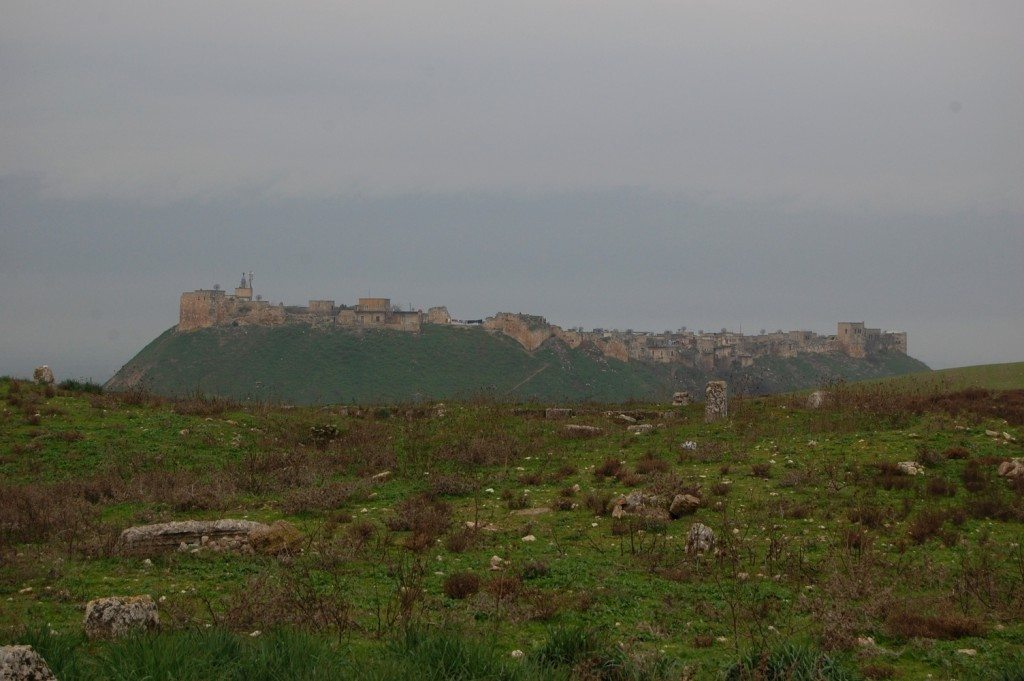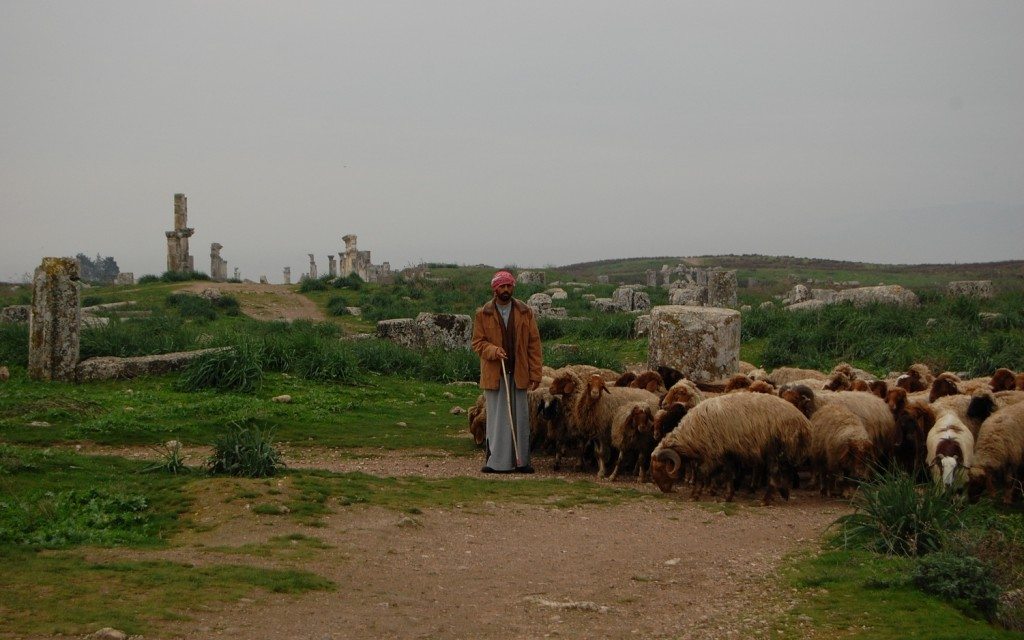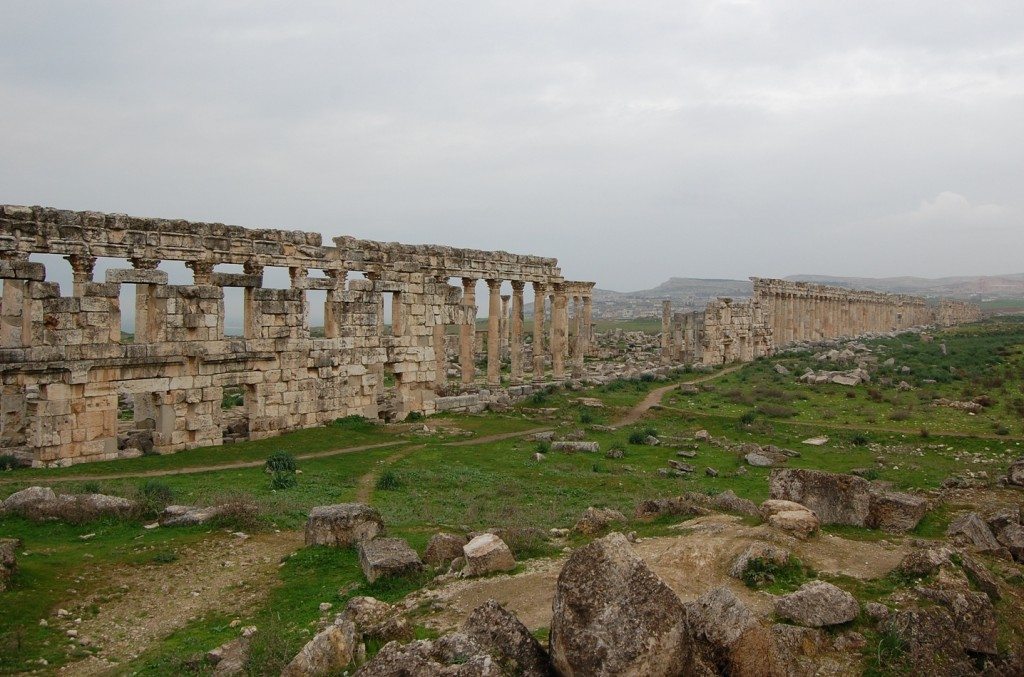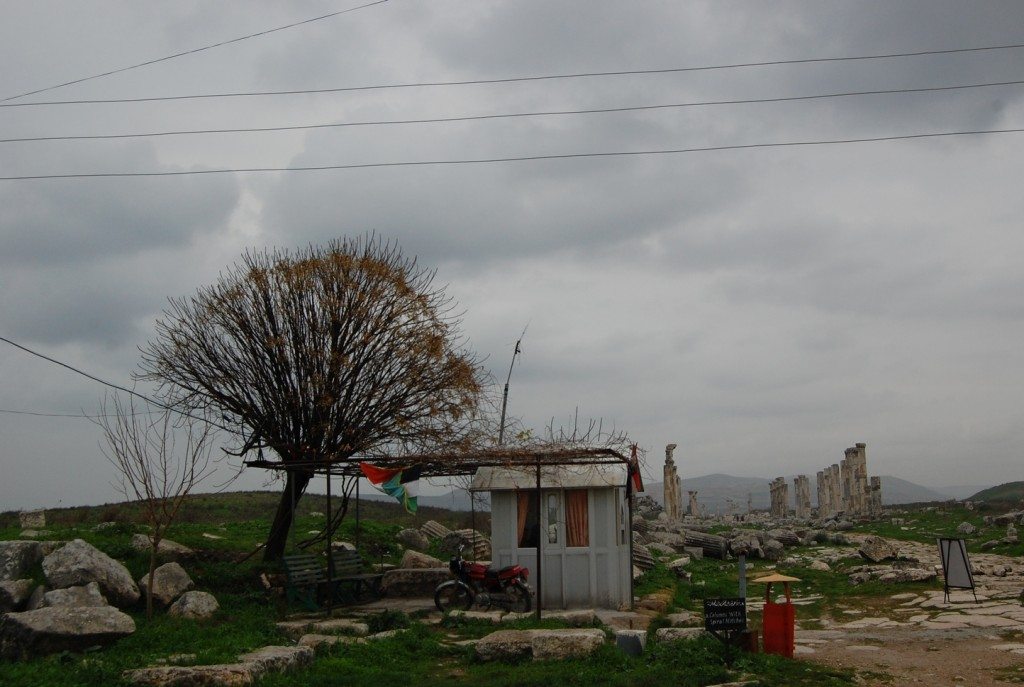The human cost of war can be so unimaginably large that it seems unfeeling to speak about the damage to cultural and natural heritage, yet it is important to acknowledge that cost as well. The disaster in Syria will be felt not just by a few generations, but for the rest of time. After World War II, the international community recognized the need to protect cultural and natural heritage in times of conflict, and UNESCO was formed. As in all human history, it seems like all those conferences, petitions, international declarations, talks and meetings failed to come up with a decisive way to prevent the destruction of life and heritage. Unfortunately, Syria is just one of the many cases of failed attempts.
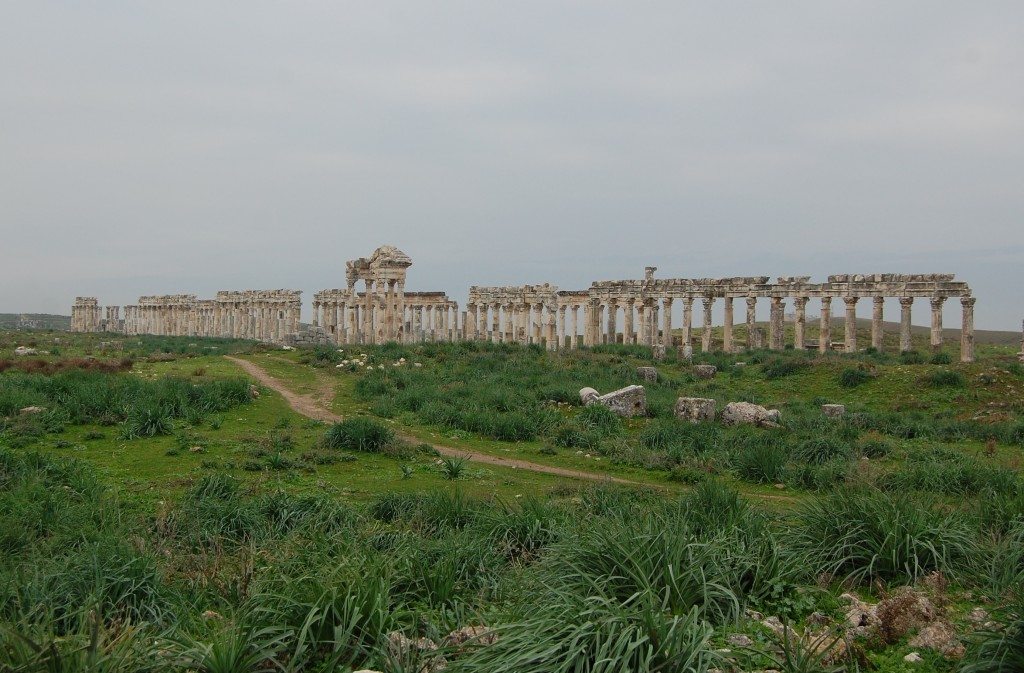
The colonnade at Apamea, following Cardo Maximus. It was built in 2nd century CE. This huge boulevard was 2 km long. Photo by Mina Bulic
The destruction of archaeological sites in conflict zones is not, as the media often reports, done mostly because of the religious views of perpetrators. No, the main reason is that there is big money to be made in the black antiquities market. Some people buy and own artifacts coming from Syria, Iraq and other zones of conflict (sometimes without realizing their origin) and in this way they finance the dogs of war. You have to wonder, who are the people who own artifacts from Apamea? Whose villas and gardens are decorated by Syria’s war? It seems many of those people are coming from our “civilized” west…
Even before the war, when I was visiting Apamea, a local was selling coins and other artifacts from the site to western tourists. The tourists were buying the stuff! There are now reports of many Syrian “collectible objects” on sale around the internet for under $100. Obviously, “antiquities lovers” do not have to be millionaires to own “a fragment of history”. By buying these “fragments of history” aren’t these people helping to make an alternate history? The history of war and destruction?
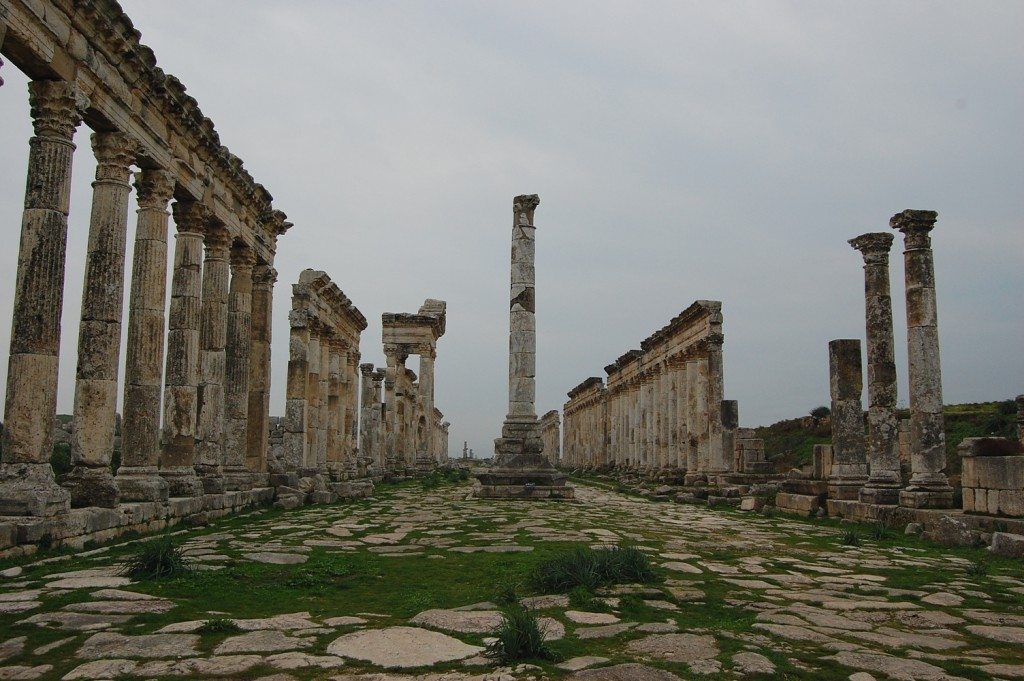
Cardo Maximus street at Apamea. The street was 20.79 metres wide and on the middle you can see the votive column in front of the baths.
There have been reports of extremely extensive looting and clandestine excavations in the Apamea area, but because the situation on the ground is as it is, a long time will pass before we can assess the exact damage. Some of the casualties probably include the stolen capitals from the Decumanus colonnade, some Roman mosaics which were taken away while bulldozers destroyed layers of the site; and the nearby citadel… the list goes on.
Photos of Apamea
The following photos show Apamea one year before the war started, probably an Apamea as we will never see again…
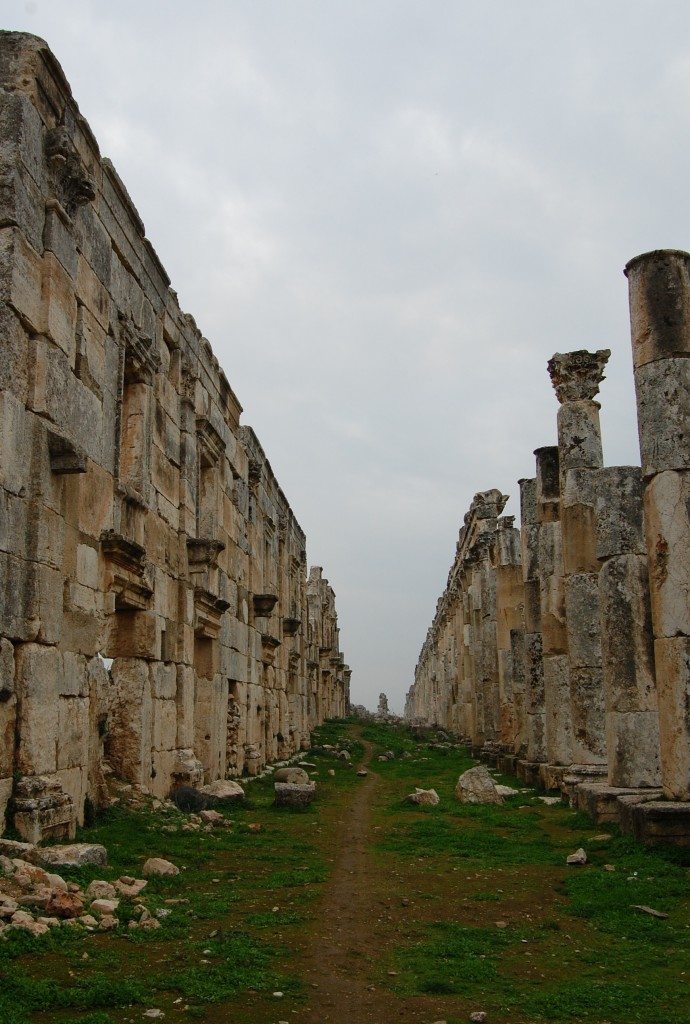
On the both sides of Cardo Maximus, the great colonnade is separating the street from the buildings. The space in between is 6.15 meter wide. Photo by Mina Bulic
